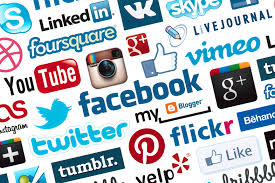Social Media Shares Don’t Equal Successful Content

Whenever you create content, you probably want it to get shared with a lot of people. After all, shares mean that people have engaged and that your content must be amazing. Actually, this isn’t the case.
While, yes, good content gets shared, shares aren’t the only indicator of powerful content and engagement. There are a whole slew of other factors that influence the power of your content on social media.
Ideally, your content gains both shares and links. That makes your content valuable and boosts your authority on search engines and social networks. This is called amplification.
A good amplification strategy makes the difference between a good digital marketer and a great digital marketer. This article will help you develop the tools to create a great amplification strategy to take your content to the next level.

Why have an amplification strategy
Having a good amplification strategy means that your content will be seen by a large number of people who will perform the action you want them to. Social platform shares don’t mean anything unless people are performing the type of engagement with your content that you want.
Now it takes more than just publishing your content to get people to react to it and act on it. You have to have an amplification strategy to take it to the next level. A good amplification strategy will get your content to the right people at the right time who will perform the right action with it.
A social sharing doesn’t equal amplification strategy
If you want to build an amplification strategy, you need to go beyond social shares. Social platforms are powerful discovery tools but their amplification strategy benefits are minimal. There are too many amplification limitations to social sharing to make it a proper amplification strategy.
This is because, more often than not, shared links aren’t clicked, shared content is frequently not read by the sharer, social shares have a short shelf life, and sharing goes down after a few days. This makes social sharing minimally beneficial when it comes to amplification. Sure, it can work sometimes, but it often doesn’t work.
Lots of shares don’t mean lots of likes
People share and like content for different reasons. For example, people share content when they find something entertaining, when they want to foster a personal relationship, when they want to show that they support a cause, when they want to share helpful content, and when they want to show that they are part of the tribe.
People like content when they view it as an authority, they support the content, the content is unlikely to change, and/or the content serves as a helpful guide. Something is shared and liked when the content is valuable and helpful. That’s the area you want your content to live.
Getting shares and likes
There are a few ways that you can get your content to get shares and likes:
- Answer a common question that people have regarding your area of expertise
- State strong and/or controversial opinions
- Post original research and data you have collected yourself
- Develop a real amplification strategy
That last point is where you, as a digital marketer, need to focus. You need to develop an amplification strategy and here is how you do it.
Developing an amplification strategy
A good amplification strategy uses five main tactics: manual promotion, target mailings, influencer advocacy, link building and SEO, and paid promotion. Each of these tactics helps you build a real amplification strategy.
Each business uses these differently, so it is best to get together with your web and marketing team and come up with a way to make all those tactics work for you.
If you are looking for a way to build and amplification strategy for your business, take a look at my done-for-you system today.

About the Author Jim Keys
Currently, I am working with other entrepreneurs and new business startups on challenges they encounter by sharing my experience and knowledge, and through coaching and mentoring when opportunities arise. I enjoy helping others fine-tune their operations and succeed in business and life.
